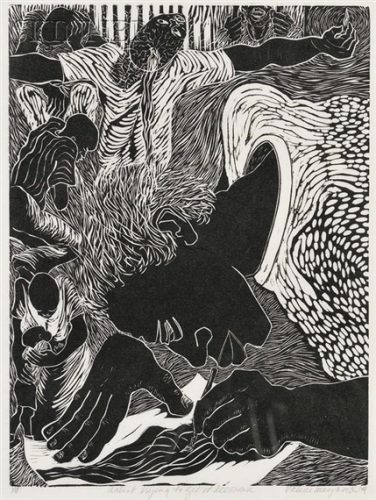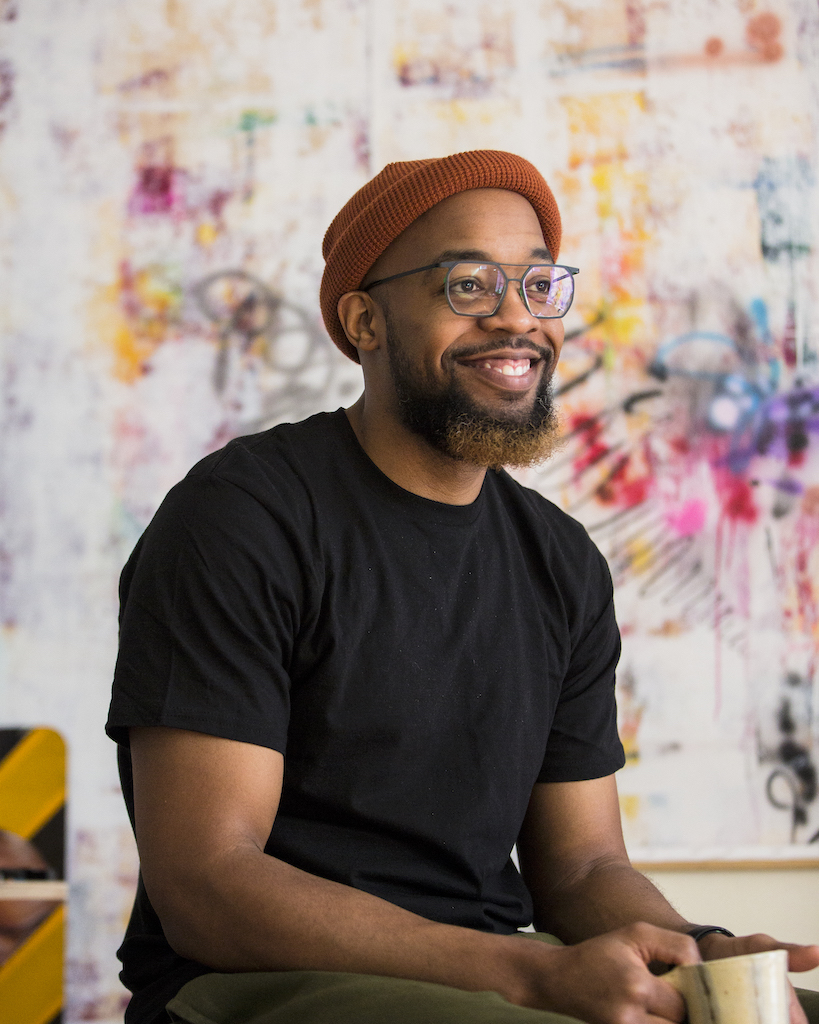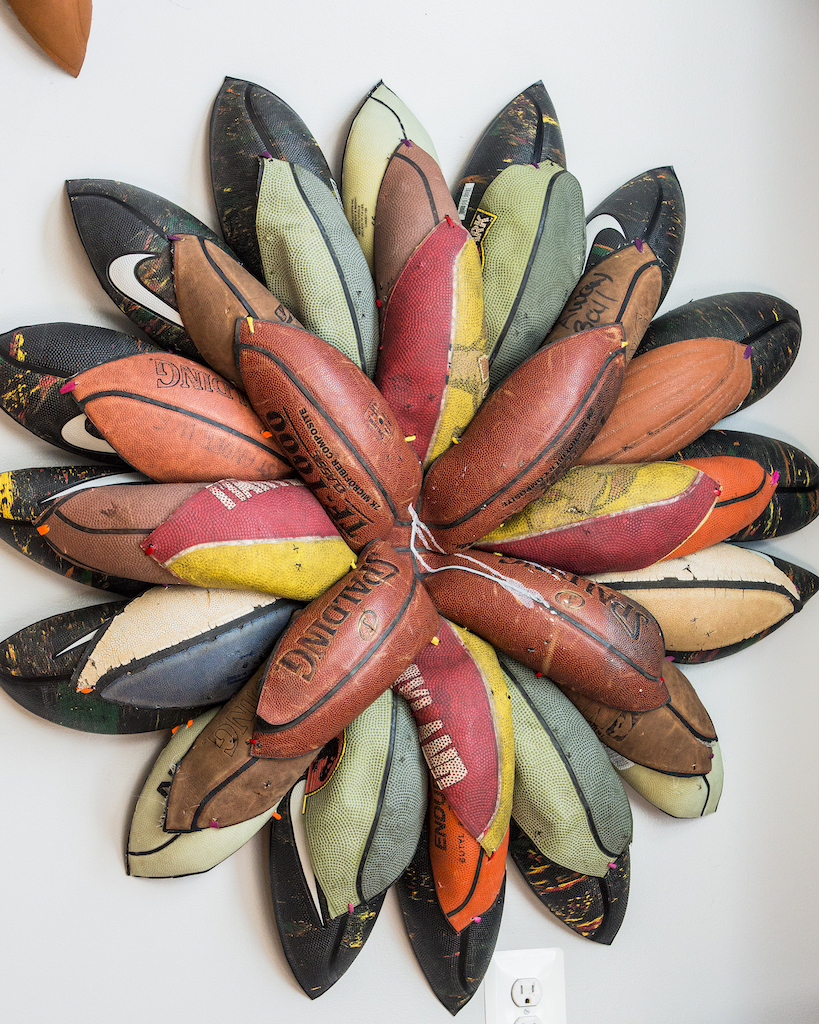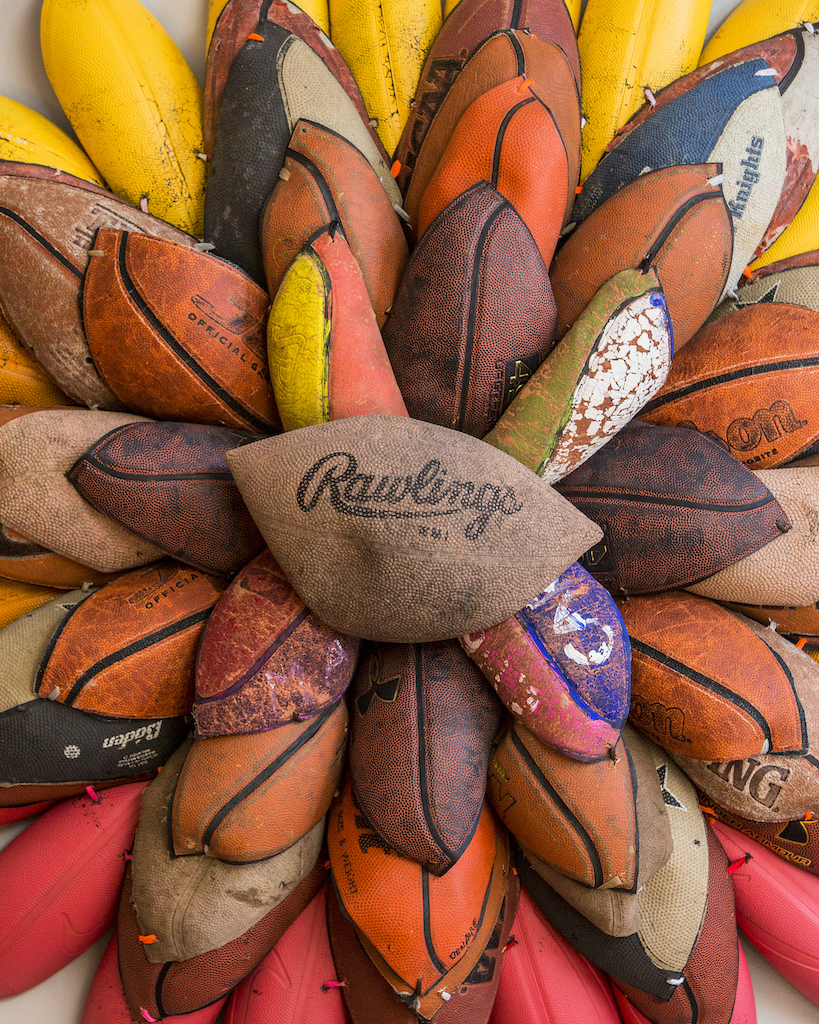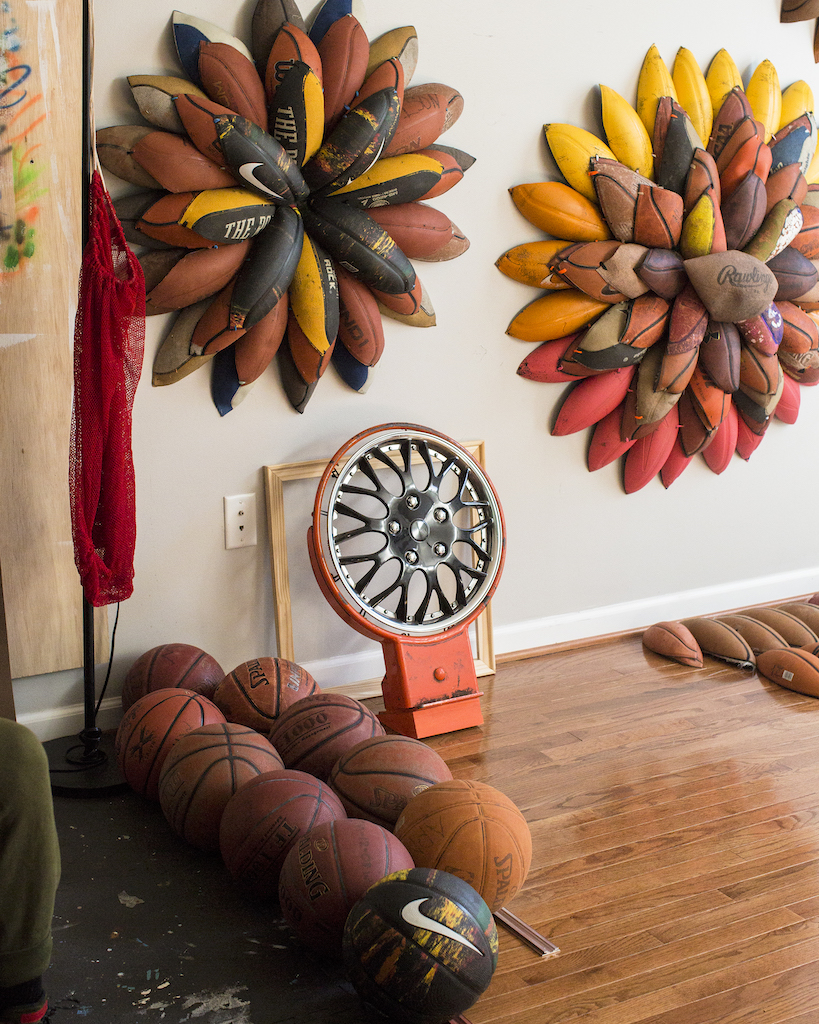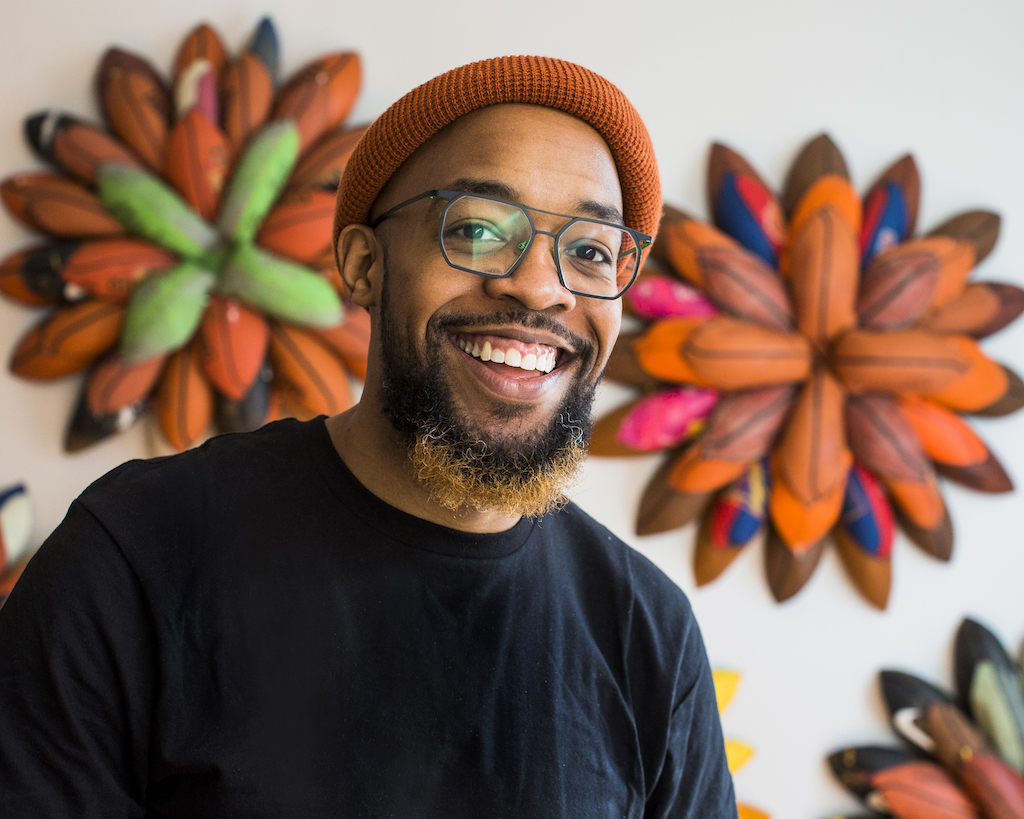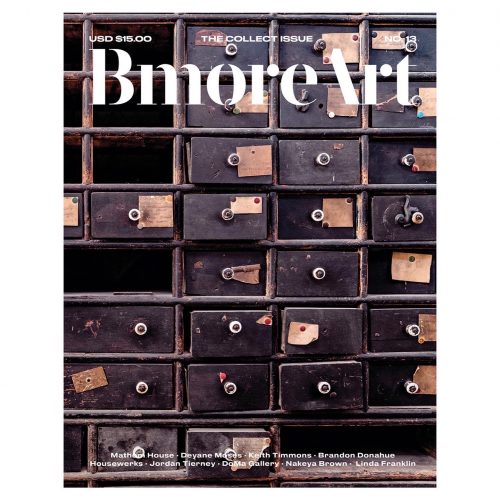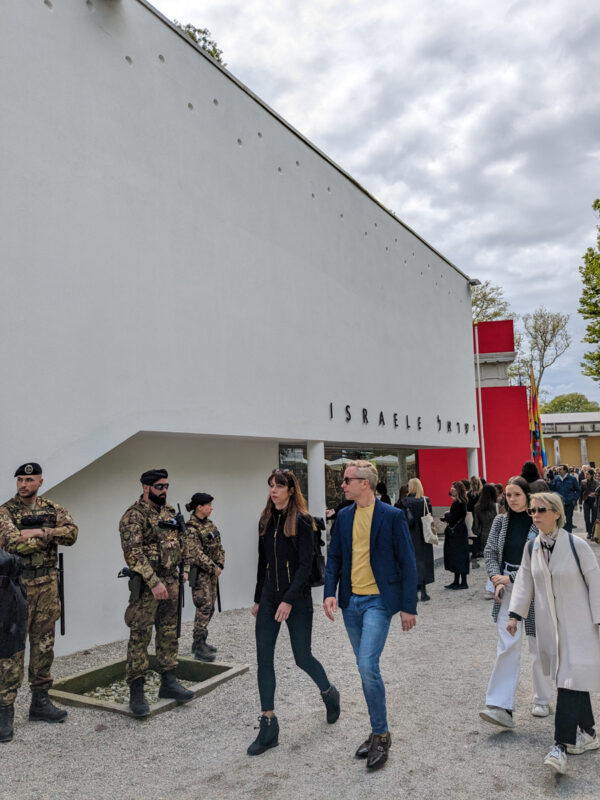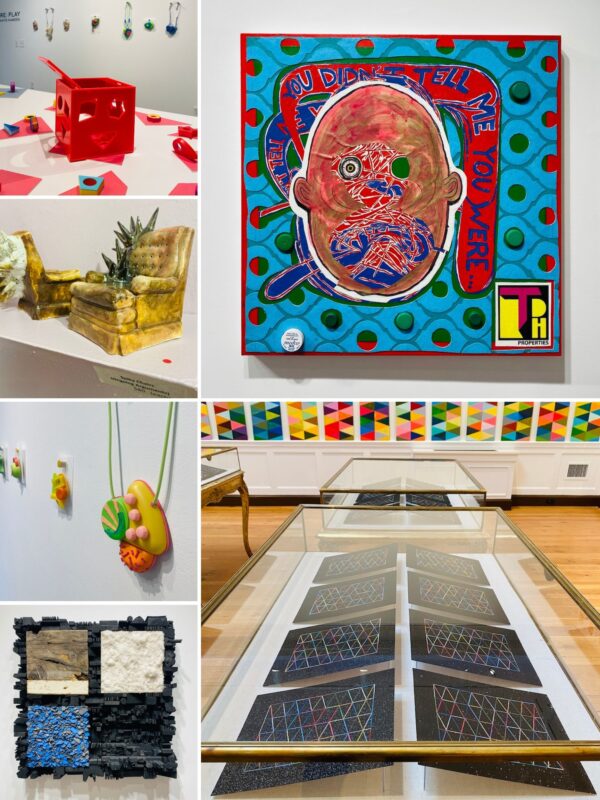Brandon Donahue is all about connection. The prolific visual artist has built a career out of making that connection material, through painting, sculpture, and assemblage. Born and raised in Memphis, Tennessee, Donahue was a three-sport athlete in high school, playing football, basketball, and running track. These days, during long hours in the studio, Donahue deconstructs and then reassembles basketballs and footballs, rearranging them into radial blooms in order to trouble stereotypical ideas surrounding sports and identity.
However, his art practice—and his practice of social connection through art—began at age 12 in Memphis, when he was introduced to airbrushing by an uncle’s coworker. Every weekend, Donahue apprenticed in the craft under Tony “Fuma” Tunstall, a pillar of the community and the man called on to employ his talents at birthday and graduation parties, festivals, and all kinds of children’s events in the neighborhood. “I was interested in how fast the airbrush could paint, it could make something happen,” Donahue says. “And the fact that he was painting without actually touching the T-shirt—there was this magical distance between the brush and the surface.”
The pressurized marking tool was Donahue’s original artistic instrument and the primary mode he used to connect with people early in his life. Like many airbrush artists, Donahue functioned as a “stylist” for friends and other members of his community, airbrushing their T-shirts, jackets, and shoes. “Art wasn’t art to me, it was airbrushing, it was about connecting with people and being social,” Donahue says. “In high school, my mom’s living room was the hangout spot. People would hang out and wait for their T-shirts to get made.” This work as a stylist, which often included memorial T-shirts for deceased loved ones, helped Donahue see the transformative power of personalization and repurposing.
